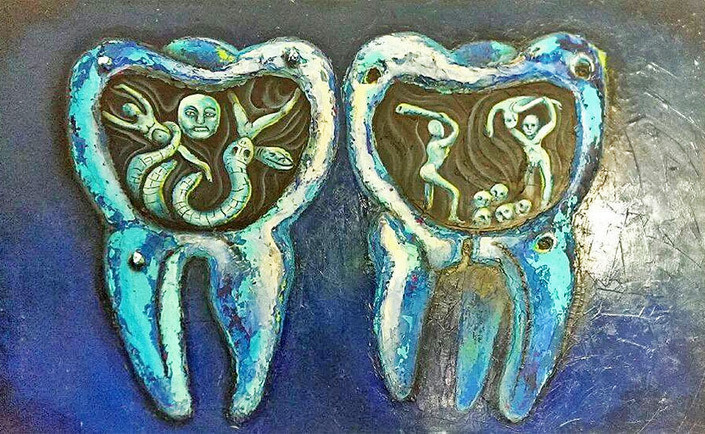In Search of Chinese Tooth Worms October 22, 2015
Author: Beach Combing | in : Contemporary , trackback
Last month Beach took some time to look up, while recovering from toothache agony, traditional tooth cures. He was particularly impressed by the widespread belief in tooth worms, the little parasites which apparently cause toothaches. These non-existent parasites were believed in throughout Euro-Asia-Africa and can be traced back to Babylonian times: it is always a problem to discover early American beliefs but very possibly tooth worms were a human universal dating back to the Neolithic. By the nineteenth-century the belief survived only in folklore: though don’t underestimate how long such beliefs can last among the people, Beach was told by an Italian villager about tooth worms in the early years of the twenty-first century! And in traditional eastern medicine the tooth worm proved particularly hardy. Here is a description from China, 1895.
Now let me advert to the practice of arresting the tooth worms. One of my relatives was once attacked by a severe cold, and after the cold was broken up by restoring activity to his skin he had a neuralgia which gave him such an intense suffering that he could neither eat nor repose, but moaned with a voice so audible and so plaintive that it sent a thrill to the heart of everyone in the house. On the second day his suffering increased to a remarkable degree: indeed, it is impossible even at this distant period to reflect without horror on the miseries of his toothache state. Finally, he submitted to the operation of a woman dentist whose agency was to arrest tooth worms. Her general operation is as follows. A chopstick and a silver pin are the only instruments she requires in her normal job. She is willing to exhibit them to anyone who conceives an inclination of discerning her trickery. She brings the chopstick in contact with the diseased tooth and cautiously pokes it through with a pin in search of the odious worms; after a while [she] scrapes out a lump of yellow minute worms on the chopstick and immerses it in a cup of water. Each lump consists of 10 to 15 worms, and sometimes 200 or 300 worms are scraped if the patient makes an exact bargain at first that the fee should be defrayed according to the number of worms scraped. The generally fee is 400 cash (1s 2d) and only the poor may take advantage of being in penury to pay 200 cash. Brist Merc, 28 Jan 1895, 6 (originally Lancet)
Other reference works refer to the tooth worm hunters hiding grubs in their pockets or small worms under their fingernails. Beach wonders if the ‘worms’ were not just bits of tartar. Perhaps the tooth hunters were our first dental hygienists: drbeachcombing AT yahoo DOT com


